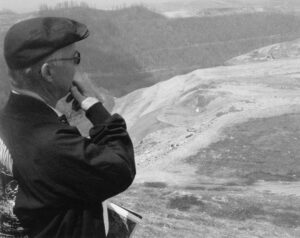Rudy Abramson
- 2001

Fellowship Title:
- The Latter Days of King Coal
Fellowship Year:
- 2001

A Judge in Coal Country
In the coal business, lawsuits are as common as roof falls and black lung disease. They’re part of doing business. Charles H. Haden II, chief judge of the U.S. District Court in Charleston WV. (The Charleston (WV) Gazette) At first blush, the West Virginia coal industry took the lawsuit styled Bragg v. Robertson as just another nuisance, more trouble-making by misty-eyed tree huggers and coal field malcontents egged on by liberal agitators, the press, and a few lawyers. Named for a combative young woman from Pigeon Creek in Mingo County and a colonel of the U.S. Army Corps of Engineers, the suit filed in July 1998 was notable mainly because it was so obviously quixotic. In effect, it was a bid to stop mountaintop removal, the most efficient and most profitable (not to mention the most destructive) coal mining technology ever seen in Appalachia. But rather than suing the coal companies, the plaintiffs in Bragg v. Robertson had gone after the West Virginia Department of Environmental Protection and the U.S. Army Corps of Engineers, accusing

New Coal Isn’t Old Coal
WHITESVILLE, WV—During the last coal boom in Appalachia, a miner could quit a job in the morning and find a better one in another hollow before the next shift started. Randy Sprouse, until recently a tavern operator at Sundial, WV, was a young man then, and he changed jobs more than once without missing a day’s work in the process. Kayford Mountain, WV–From his family burial plot on Kayford Mountain, Larry Gibson looks down upon what was once a mountain peak. During those fabulous days in the mid-seventies, thousands of men who had left the mountains came home from distant cities to dig coal. In West Virginia, Virginia, Kentucky, and Tennessee, small truck mines that had been abandoned for years were reopened. Nearly anybody who had or could borrow money to buy a dump truck and a road grader could become a strip mine operator. Bootleggers mined without permits and got good money for gray mixtures of coal, slate, and rock. Spot market prices soared to nearly $100 a ton and suddenly-rich independent operators lived
